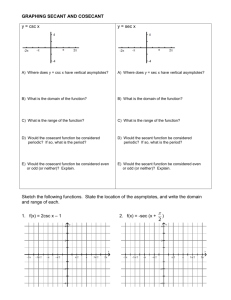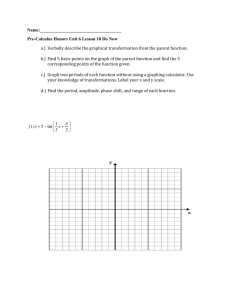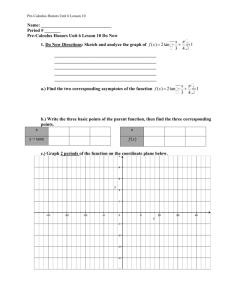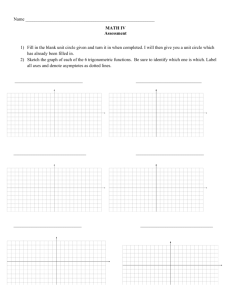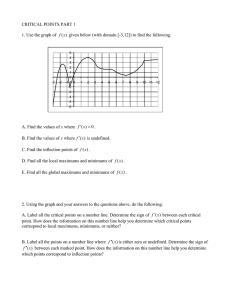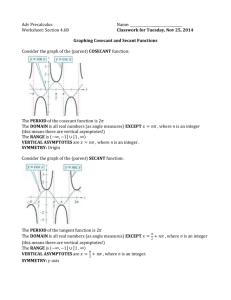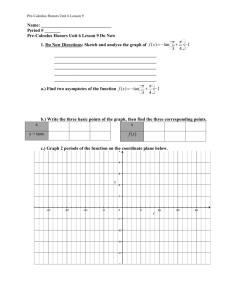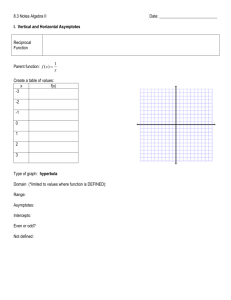Graphing Secant and Cosecant
advertisement
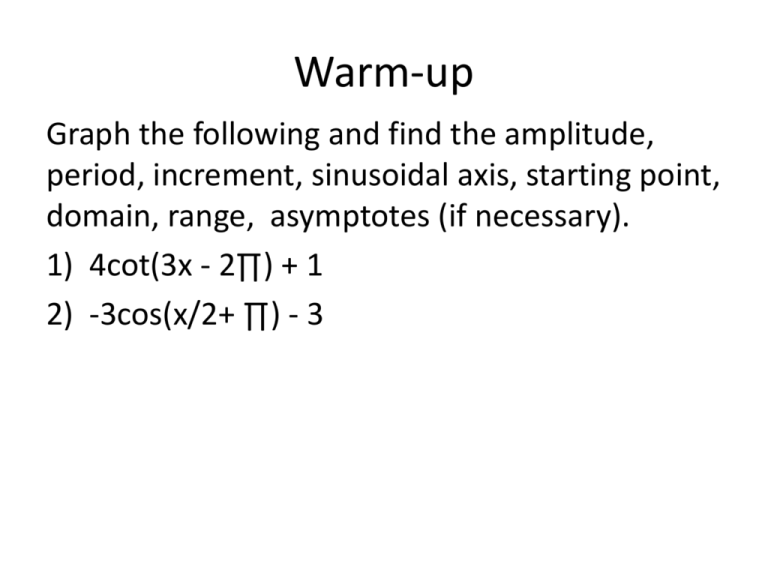
Warm-up Graph the following and find the amplitude, period, increment, sinusoidal axis, starting point, domain, range, asymptotes (if necessary). 1) 4cot(3x - 2∏) + 1 2) -3cos(x/2+ ∏) - 3 Graphing Secant and Cosecant Calculator Investigation • Graph the following pairs of graphs on your calculator two at a time. – sin(x) and csc(x) – 2sin(x) and 2csc(x) – sin(x) – 3 and csc(x) – 3 – sin(2x - 2∏) and csc(2x - 2∏) Notice things and be ready to discuss them. Function Y = sin(x) y = csc(x) Ratio Identity Asymptotes How to graph cosecant 1) Lightly graph sine as a guide function. 2) Draw asymptotes wherever the graph of sine crosses the sinusoidal axis. (Why?) 3) Draw the cosecant graph using the maximums and minimums of the sine graph. 4) Erase the sine graph. Lets graph one together… f(x) = -2csc(3x + ∏) – 4 …and also find the relative maximums, relative minimums, asymptotes, period, increment, S.A., starting point, domain and range. Lets graph another one together… f(x) = -4sec(2x - 3∏) + 2 …and also find the relative maximums, relative minimums, asymptotes, period, increment, S.A., starting point, domain and range. Practice Find the relative maximums, relative minimums, asymptotes, period, increment, S.A., starting point, domain and range and graph each function: Y= Y= 𝜋 sec(x + ) 3 𝜋 csc(x - ) 2 Y = 2sin(2x Y = cot(x/2 -1 𝜋 - ) 2 𝜋 + ) 3 Y = -4tan(3x + +1 𝜋 ) +6 4
